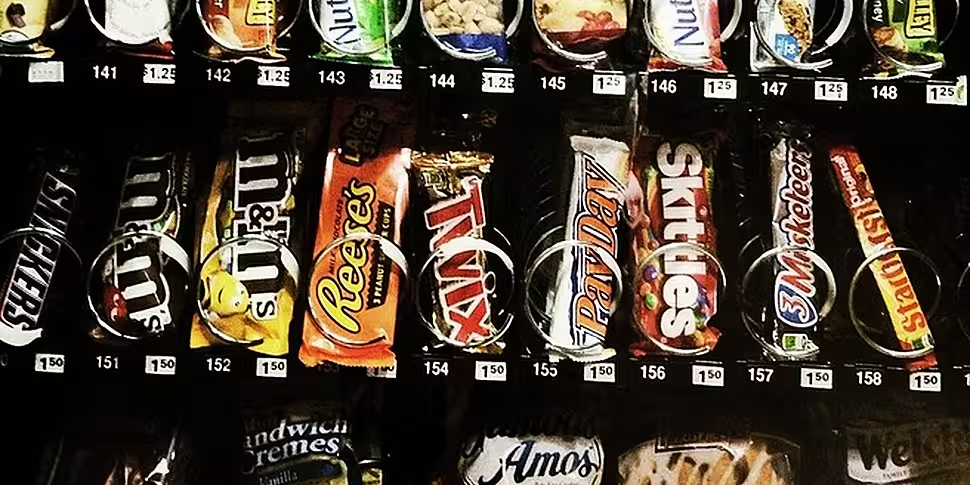Should snacking be vilified and pilloried like smoking in an effort to combat obesity? That’s what George Hook asked today when he spoke to Dr Donal O’Shea, consultant endocrinologist and Director of the Weight Management Clinic at St Columcille's Hospital in Loughlinstown, Co Dublin.
In the UK, the government's anti-obesity advisor is calling not only for taxation on sugary and fattening foods, but also a societal change that would vilify snacking to the point that it is regarded as harmful to our health as smoking. Prof Susan Jebb of Oxford University says fizzy drinks would be the best place to start, and speaking to George, Dr Donal O'Shea says that our bodies are becoming addicted to the sugar:
But while George recognises the values of curtailing overindulgence on fattening foods, he pushed Dr O'Shea on Prof Jebb's calls to pillory the public for piling on the pounds by shaming them for eating a snack in public.
While Dr O'Shea is not going to crucify George for chewing on a Crunchie, he does want the public to show vigilance and awareness of the obesity crisis, and to acknowledge that it's an environmental issue that we all share.
There is a lot of science involved in making snack foods so utterly irresistible. From economic theories to mind-bending psychology, with an unhealthy dose of food chemistry thrown in for good measure, we’ve become a society that’s living hand to mouth, with those hands never having to reach too far.
Food science has become a type of edible alchemy, with powerful colouring and artificial flavours turning our snack foods into something golden, usually by throwing sugar on top. The experimental psychologist Howard Moskowitz, in an interview with the New York Times, has shined a light on some of the science involved:
[The] food industry already knew some things about making people happy - and it started with sugar. Many of the Prego sauces - whether cheesy, chunky or light - have one feature in common: The largest ingredient, after tomatoes, is sugar. A mere half-cup of Prego Traditional, for instance, has the equivalent of more than two teaspoons of sugar, as much as two-plus Oreo cookies. It also delivers one-third of the sodium recommended for a majority of American adults for an entire day. In making these sauces, Campbell supplied the ingredients, including the salt, sugar and, for some versions, fat, while Moskowitz supplied the optimization. "More is not necessarily better," Moskowitz wrote in his own account of the Prego project. "As the sensory intensity (say, of sweetness) increases, consumers first say that they like the product more, but eventually, with a middle level of sweetness, consumers like the product the most (this is their optimum, or ‘bliss,' point)."
The profit-driven end goal of giant food-processing conglomerates seemingly knows no end, either:
Todd Putman, who worked at Coca-Cola from 1997 to 2001, said the goal became much larger than merely beating the rival brands; Coca-Cola strove to outsell every other thing people drank, including milk and water. The marketing division's efforts boiled down to one question, Putman said: "How can we drive more ounces into more bodies more often?" (In response to Putman's remarks, Coke said its goals have changed and that it now focuses on providing consumers with more low- or no-calorie products.)
To hear how snacking is affecting obesity rates in Ireland, listen back to this evening’s The Right Hook here:









